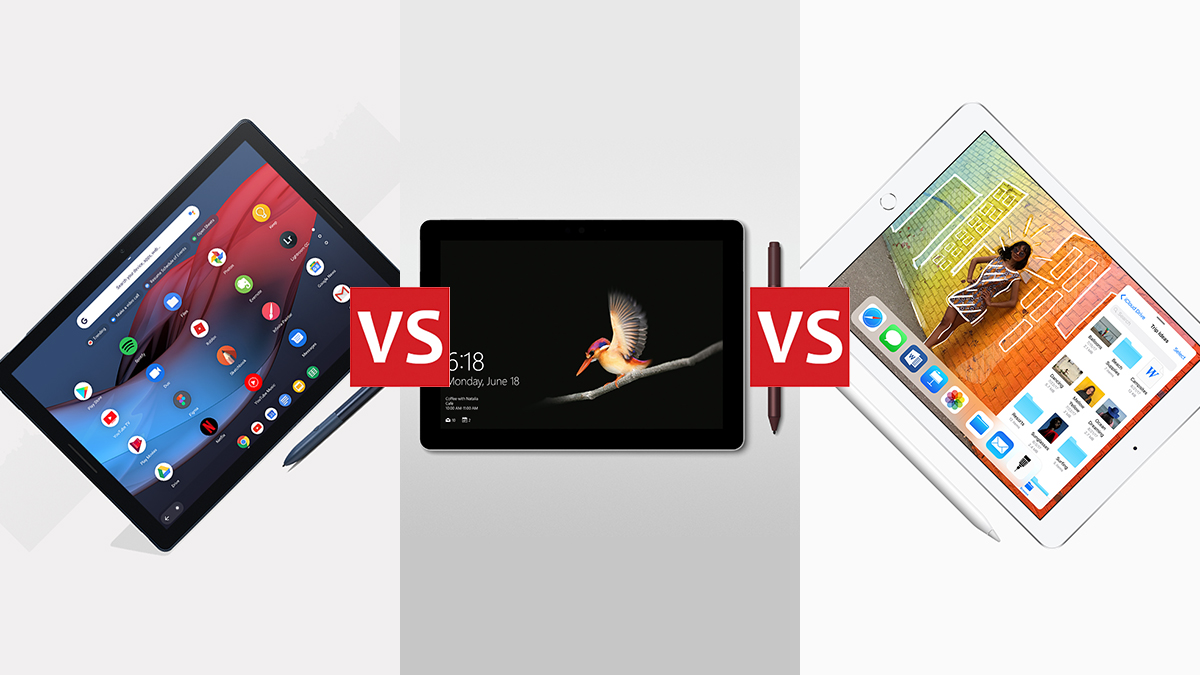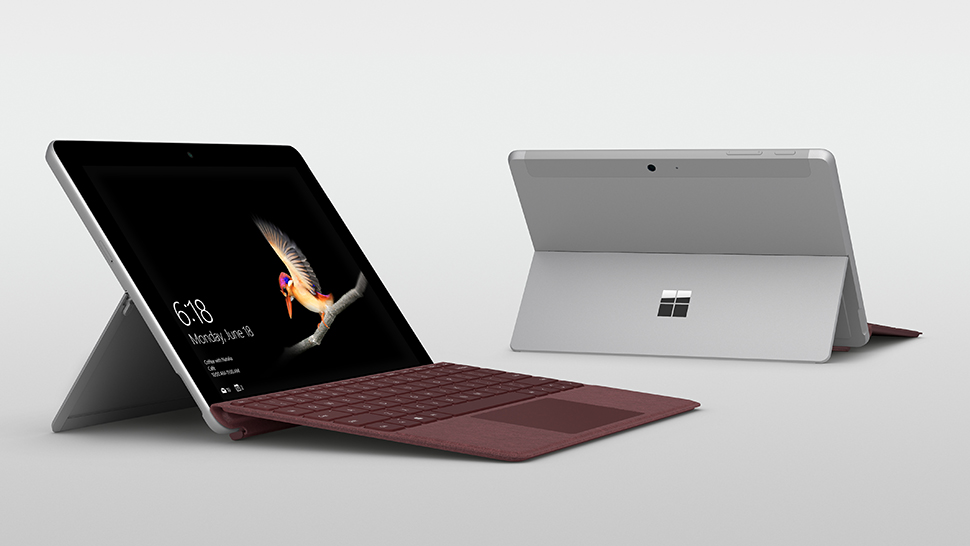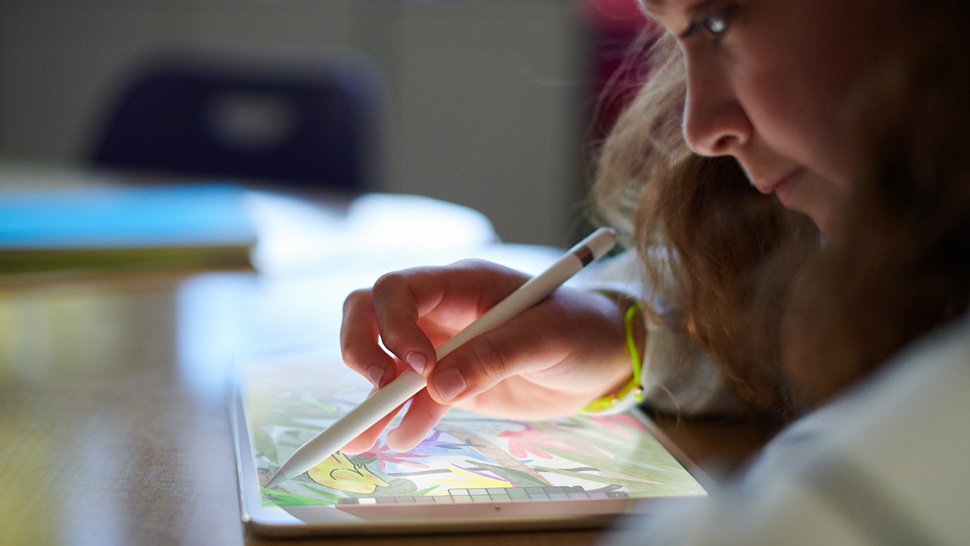Pixel Slate vs Surface Go vs iPad: battle of the affordable 2-in-1 tablets
Who wins between Google, Microsoft and Apple?


If you're in the market for an affordable tablet that can double up as a laptop – with the addition of a clip-on keyboard – you've got more choice than ever before. Here we've got three of the best devices in this category: the Pixel Slate, the Surface Go, and the 2018 iPad.
All three can work in tablet mode or with a keyboard attachment, all three give you a broad selection of apps and features, and all three are made by tech companies with strong reputations. But which device is best for you? We're going to help you decide.
- These are the best 2-in-1 laptops you can buy right now
- Need a tablet? Here are our favourite picks of 2018 so far
Pixel Slate vs Surface Go vs iPad 2018: design

Pixel Slate
Full marks to the design teams at Google, Microsoft and Apple, because these are three fine-looking tablet hybrids. It's perhaps the iPad that looks most dated, with those thick bezels and the home button, but we like the look of all three of these devices.
The Pixel Slate carries a 12.3-inch, 3,000 x 2,000 pixel touchscreen display (293 pixels-per-inch), with a thickness of 7 mm (0.28 inches) and a weight of 721 grams (1.6 pounds). There's just one colour option, which Google is calling midnight blue, and that colouring carries over to the Pixel Slate Keyboard as well.
The Surface Go brings with it a 10-inch, 1,800 x 1,200 pixel touchscreen display (216 ppi), though it's slightly thicker than the Pixel Slate (to cope with those more powerful components): 8.3 mm (0.33 inches). It's lighter though, starting at 522 grams (1.2 pounds). There's just one colour, silver, though you can pick up the Surface Go Signature Type Cover (and the Surface Pen) in black, platinum, burgundy and cobalt blue.
Finally the iPad, which has a 9.7-inch, 2,048 x 1536 pixel touchscreen display (264 ppi), and a thickness of 7.5 mm (0.3 inches), sitting between its two competitors in the thinness stakes. You can buy the 2018 iPad in silver, gold or space grey.
Pixel Slate vs Surface Go vs iPad 2018: specs

Surface Go
You've got a choice of specs for these devices, depending on your needs and budget: the Pixel Slate comes with an Intel Celeron processor or 8th-gen Intel Core m3, i5 or i7 processors. That's paired with 4GB, 8GB or 16GB of RAM, while the storage choice is 32GB, 64GB, 128GB or a hefty 256GB.
Get all the latest news, reviews, deals and buying guides on gorgeous tech, home and active products from the T3 experts
Over to the Surface Go, yours with an Intel Pentium Gold 4415Y CPU, 4GB or 8GB of RAM, and either 64GB or 128GB of storage space. If you need more oomph than that from a Surface, you're going to have to take a look at the Surface Pro selections instead.
With the iPad you've got an A10 Fusion chip inside (one generation older than the chip inside the iPhone XS), 2GB of RAM, and either 32GB or 128GB of internal storage. As with the Surface line from Microsoft, there's a more capable Pro line of iPads that you can take a look at if you need better specs.
So which is best? The Pixel Slate can be configured with better specs than either the Surface Go or the 2018 iPad, but as we've said, Microsoft and Apple do have Pro ranges available if you need an upgrade. The good news is that whatever your choice of device, you should be able to find something to suit your needs and budget.
Pixel Slate vs Surface Go vs iPad 2018: features

iPad 2018
The choice of operating systems is likely to play a big part in your choice of device: do you want the lightweight, web-based Chrome OS of the Pixel Slate, with added Android app support? Are you more of a fan of Windows 10 on the Surface Go? Or are you most comfortable with iOS from Apple running on the iPad?
All three options are polished and mature now. Windows 10 is perhaps the most versatile – capable of running desktop apps and a full web experience. Chrome OS is perfect for web-based work with a dash of Android apps, and won't slow down like Windows might. And iOS is the best of the lot for pure tablet work, with a fantastic app selection.
There's no wireless charging here, unfortunately, and no waterproofing either. The Pixel Slate and iPad can be unlocked with a fingerprint; the Surface Go opts for face unlock instead (or you can just enter a PIN or a password). As for battery life, Google quotes a "use time" of up to 10 hours for the Pixel Slate, Microsoft says the Surface Go can last for 9 hours of video playback, and Apple quotes up to 10 hours of video watching on the iPad.
There are forward and rear-facing cameras here – both are 8MP models on the Pixel Slate, the Surface Go has a 5MP camera on the front and an 8MP camera on the back, while the iPad launched in 2018 goes with an 8MP camera on the back and a 1.2MP camera on the front. If you really must take photos with your tablet – or you just want to make some video calls – these devices are all up to the job.
Pixel Slate vs Surface Go vs iPad 2018: verdict

Pixel Slate vs Surface Go vs iPad 2018
These are all fantastic devices that are unlikely to let you down or leave you disappointed with your purchase. We like the way the Pixel Slate offers a full desktop web experience, plus the option of Android apps too, though neither Chrome OS nor Android apps are really well configured for tablet use.
The iPad has long been the best tablet around, meanwhile: iOS and the many fantastic apps that run on it are perfect for a portable touchscreen. It's not quite as capable of you want to attach a keyboard and use it more as a laptop, but it'll do the job.
Windows 10 is still growing into its role as both a tablet OS and a desktop OS – it's competent at both without really excelling at either. If you're comfortable with Windows and need the power of desktop apps (plus a full desktop web experience), then it's the obvious choice. It's not as capable when working as a tablet though, not least because few Windows apps are written to be run on tablets.
Don't forget price too – both the Surface Go and the iPad are positioned at the budget end of the market (below the Surface Pros and iPad Pros respectively), while the Pixel Slate is more of a premium device. Make sure you factor in the price of accessories, like keyboard covers and styluses, when comparing these products.
Dave has over 20 years' experience in the tech journalism industry, covering hardware and software across mobile, computing, smart home, home entertainment, wearables, gaming and the web – you can find his writing online, in print, and even in the occasional scientific paper, across major tech titles like T3, TechRadar, Gizmodo and Wired. Outside of work, he enjoys long walks in the countryside, skiing down mountains, watching football matches (as long as his team is winning) and keeping up with the latest movies.
